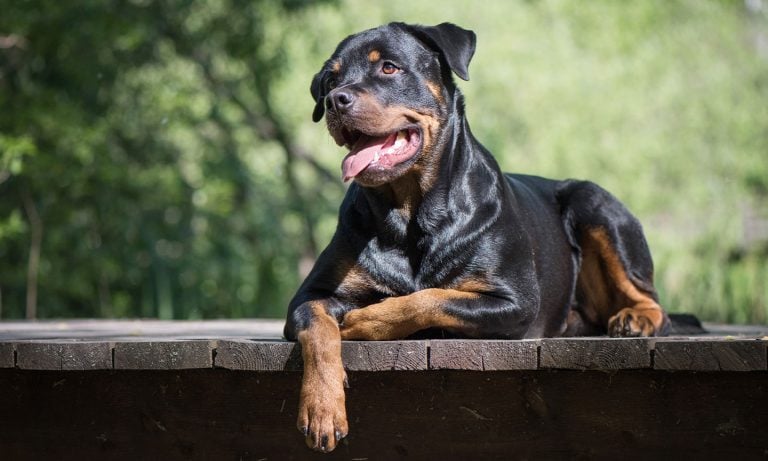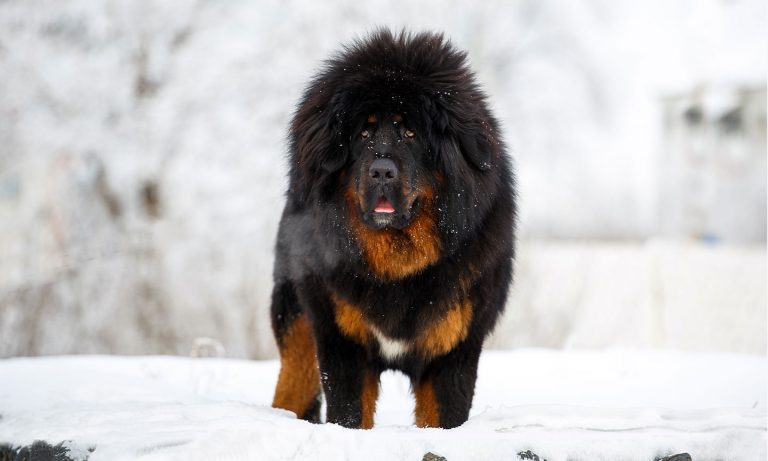Rottweiler vs Tibetan Mastiff

Breed Snapshot
Best For
A popular working breed, Rottweilers do best with experienced pet parents who can provide early training and socialization. These robust, large-sized dogs thrive in homes with active individuals or families, appreciating both mental and physical...
A popular working breed, Rottweilers do best with experienced pet parents who can provide early training and socialization. These robust, large-sized dogs thrive in homes with active individuals or families, appreciating both mental and physical challenges.
Rottweiler Temperament
Rottweilers are powerful and intelligent dogs who benefit from early training and socialization. They are easy to train and eager to please their families, but are also strong-willed and may seem aloof to the outside world. Originally descending from the mastiffs of the Roman legions, Rottweilers have been valuable...
Rottweilers are powerful and intelligent dogs who benefit from early training and socialization. They are easy to train and eager to please their families, but are also strong-willed and may seem aloof to the outside world.
Originally descending from the mastiffs of the Roman legions, Rottweilers have been valuable companion animals and working dogs for centuries. This is just as true today as it was years ago—families that are willing to put in the time to train and socialize their Rottweiler will be rewarded with an intensely loyal and energetic dog.
In fact, Rottweilers are much more emotionally needy than many people assume. This dog has a fearsome reputation, but in reality, Rottweilers are obsessed with their people and want to be around them all the time. Rottweilers who are isolated from people or kept alone may begin to exhibit unwanted behaviors when they do finally get access to people.
Rottweilers were originally bred to be protectors. Combined with their great strength, this makes it especially important that Rottweilers are properly trained and socialized. Once socialized, Rottweilers can easily get along with other dogs and young children. Like any dog, Rottweilers who are poorly trained, subjected to harsh discipline, or isolated are more likely to exhibit unwanted fear-based behaviors, including biting and aggression.
One especially interesting features of these dogs is their vocalization. Rottweilers aren’t known for excessive barking (although of course they can and will bark), but they do have a deep rumble that sounds almost like a growl. Some pet parents think of this rumbling sound as “talking.” This “Rottie rumbling” is almost like the purring of a giant cat and often means your Rottweiler is happy and content, particularly during belly rubs.
Rottweiler Traits

Breed Snapshot
Best For
The majestic and independent Tibetan Mastiff makes a devoted family pet. Ranking among the largest dog breeds, they thrive with a job to do and plenty of room to roam.
Tibetan Mastiff Temperament
Tibetan Mastiffs are independent introverts who tend to be wary of strangers but are loving and loyal to their people. Though personality can vary from one dog to the next, these dogs tend to be headstrong and often think they know what’s best and view themselves more as equ...
Tibetan Mastiffs are independent introverts who tend to be wary of strangers but are loving and loyal to their people. Though personality can vary from one dog to the next, these dogs tend to be headstrong and often think they know what’s best and view themselves more as equal partners than pets.
Like all dogs, Tibetan Mastiffs require proper socialization from the time they’re a puppy. But with plenty of exposure to different people, pets and situations throughout their lives, they’ll be more accepting, though perhaps still aloof, reserving their affection for loved ones.
Pet parents need to be diligent about working with their pup to prevent biting tendencies. They have a bite force of 500 pounds, stronger than that of an American Pit Bull Terrier or German Shepherd, so even a playful bite could do major damage.
Tibetan Mastiff puppies can be taught to get along well with children and other pets when raised with them, but as adults, they may be less accepting of new dogs or other people’s children. And with their sheer size and strength it’s a good idea to supervise even well-socialized Tibetans around young children, cats or small dogs. Remember to teach all children how to interact gently and respectfully with dogs.
Their bossy natures make them a bad fit for obedience competitions, and they’re not built for agility or speed. But give these dogs some sheep, goats or cattle to guard, and watch them excel. They were bred to guard livestock, after all, and they’re at their best and happiest when they’re allowed to be watchful over their domain.




